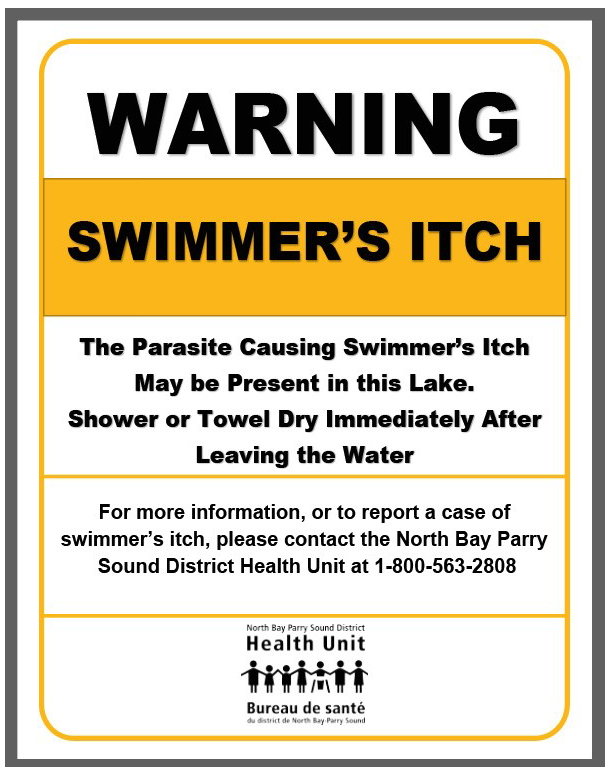Swimmer’s Itch is a skin rash caused by an allergic reaction to infection with certain parasites of birds and mammals. These microscopic parasites swim in fresh and salt water, such as lakes, ponds, and oceans used for swimming and wading.
Swimmer’s Itch generally occurs during summer months.
What are the symptoms of Swimmer’s Itch? |
| Within minutes to days after swimming in contaminated water, you may experience tingling, burning, or itching of the skin. Small reddish pimples appear within 12 hours. Pimples may develop into small blisters. Itching may last up to a week or more, but will gradually go away.
Because Swimmer’s Itch is caused by an allergic reaction to infection, the more often you swim or wade in contaminated water, the more likely you are to develop more serious symptoms. The greater the number of exposures to contaminated water, the more intense and immediate the symptoms of Swimmer’s Itch will be. |
What do I do if I think I have Swimmer’s Itch? |
If you have a rash, you may try the following for relief:
Try not to scratch. Scratching may cause the rash to become infected. If itching is severe, your healthcare provider may prescribe lotion or creams to lessen your symptoms. If symptoms persist, consult a physician. |
Who is at risk for Swimmer’s Itch? |
| Anyone who swims or wades in infested water may be at risk. Larvae are more likely to be swimming along shallow water by the shoreline. Children are most often affected because they swim, wade, and play in the shallow water more than adults. Also, they do not usually towel dry themselves when leaving the water. |
What can be done to reduce the risk of Swimmer’s Itch? |
|
How does water become infested with the parasite? |
|
The adult parasite lives in the blood of infected animals such as ducks, geese, gulls, swans, as well as certain aquatic mammals such as muskrats and beavers. The parasites produce eggs that are passed in the feces of infected birds or mammals. If the eggs land in the water, the water becomes contaminated. Eggs hatch, releasing small, free-swimming larvae. These larvae swim in the water in search of a certain species of aquatic snail. If the larvae find one of these snails, they infect the snail and undergo further development. Infected snails release a different type of larvae (cercariae) into the water. This larval form then searches for a suitable host (bird, muskrat) so they can start the lifecycle over again. Although humans are not a suitable host, the larvae burrow into the skin of swimmers, which may cause an allergic reaction/rash. The larvae cannot develop inside a human and they soon die. |
Once Swimmer’s Itch has occurred at a beach, will the water always be unsafe? |
|
No. Many factors must be present for Swimmer’s Itch to become a problem in water. Since these factors change (sometimes within a swim season), swimmer’s itch will not always be a problem. However, there is no way to know how long water may be unsafe. Larvae are generally infective for 24 hours once they are released from the snail. However, an infected snail will continue to produce cercariae throughout the remainder of its life. For future snails to become infected, migratory birds or mammals in the area must also be infected so the lifecycle can continue. |
Swimmer's Itch Signage |
|
Following complaints of Swimmer’s Itch at a public beach, a warning sign is posted at the beach to notify users and advise how to reduce the risk of Swimmer’s Itch.
|
For more information, please contact our Environmental Health Program at 1-800-563-2808 extension 5400, or by email at environmental.health@healthunit.ca.
Adapted with permission from Peterborough Public Health.



